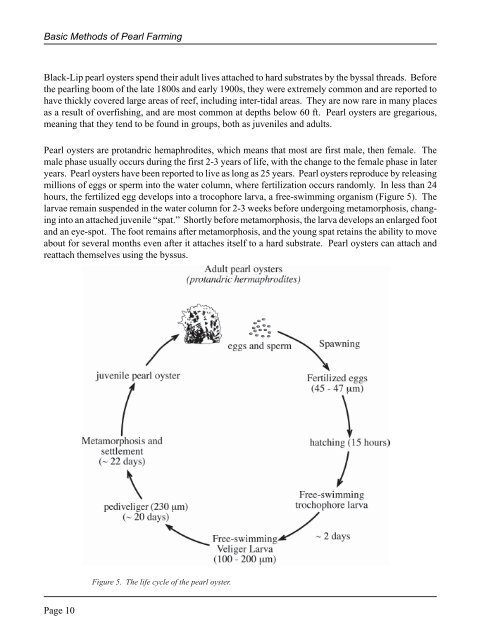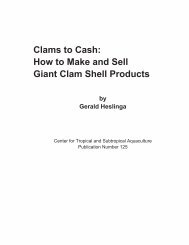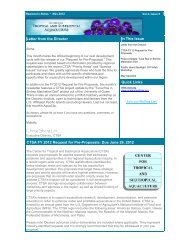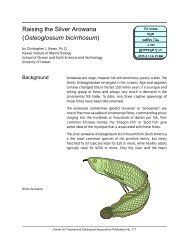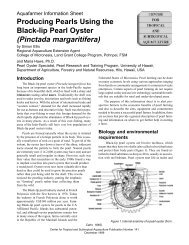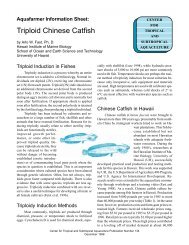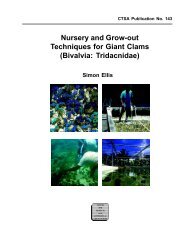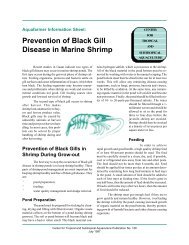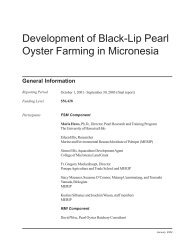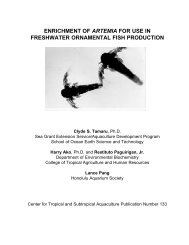The Basic Methods of Pearl Farming: A Layman's Manual - CTSA
The Basic Methods of Pearl Farming: A Layman's Manual - CTSA
The Basic Methods of Pearl Farming: A Layman's Manual - CTSA
You also want an ePaper? Increase the reach of your titles
YUMPU automatically turns print PDFs into web optimized ePapers that Google loves.
<strong>Basic</strong> <strong>Methods</strong> <strong>of</strong> <strong>Pearl</strong> <strong>Farming</strong>Black-Lip pearl oysters spend their adult lives attached to hard substrates by the byssal threads. Beforethe pearling boom <strong>of</strong> the late 1800s and early 1900s, they were extremely common and are reported tohave thickly covered large areas <strong>of</strong> reef, including inter-tidal areas. <strong>The</strong>y are now rare in many placesas a result <strong>of</strong> overfishing, and are most common at depths below 60 ft. <strong>Pearl</strong> oysters are gregarious,meaning that they tend to be found in groups, both as juveniles and adults.<strong>Pearl</strong> oysters are protandric hemaphrodites, which means that most are first male, then female. <strong>The</strong>male phase usually occurs during the first 2-3 years <strong>of</strong> life, with the change to the female phase in lateryears. <strong>Pearl</strong> oysters have been reported to live as long as 25 years. <strong>Pearl</strong> oysters reproduce by releasingmillions <strong>of</strong> eggs or sperm into the water column, where fertilization occurs randomly. In less than 24hours, the fertilized egg develops into a trocophore larva, a free-swimming organism (Figure 5). <strong>The</strong>larvae remain suspended in the water column for 2-3 weeks before undergoing metamorphosis, changinginto an attached juvenile “spat.” Shortly before metamorphosis, the larva develops an enlarged footand an eye-spot. <strong>The</strong> foot remains after metamorphosis, and the young spat retains the ability to moveabout for several months even after it attaches itself to a hard substrate. <strong>Pearl</strong> oysters can attach andreattach themselves using the byssus.Figure 5. <strong>The</strong> life cycle <strong>of</strong> the pearl oyster.Page 10


